Trees in Rajasthan
In the desert expanse of Rajasthan, trees in Rajasthan defy the odds, standing as resilient symbols of life. From the hardy Khejri to the majestic Peepal, each species tells a story of adaptation and cultural significance. Join us on a journey through Rajasthan’s verdant oases to explore the rich diversity of trees that thrive in this arid land.
1. Khejri (Prosopis cineraria):
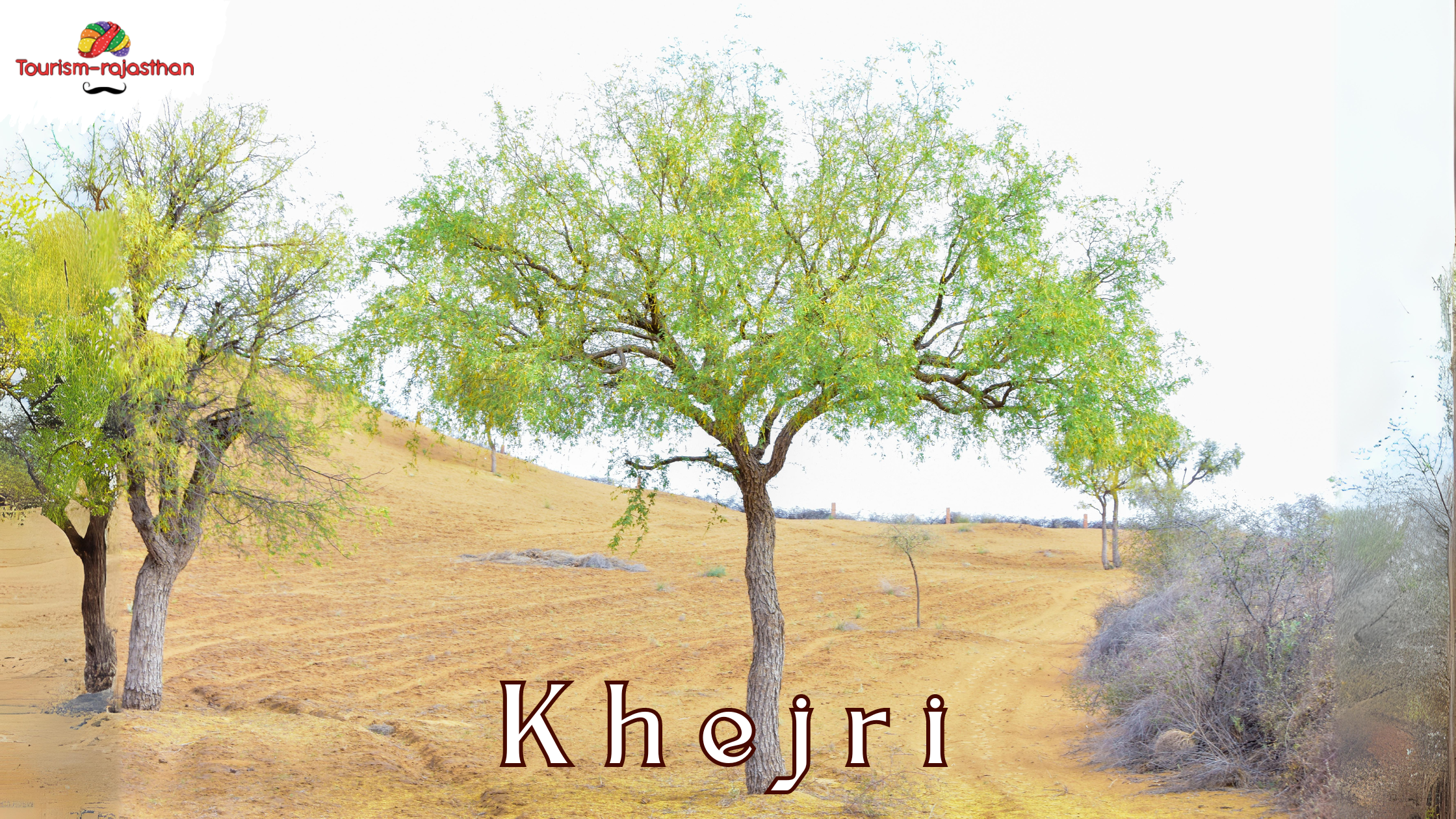

Khejri, also known as the Ghaf tree, holds immense cultural and ecological significance in Rajasthan. With its characteristic deep roots and feathery foliage, it thrives in the arid landscapes of the region, offering shade and sustenance to both humans and wildlife. Renowned for its resilience, Khejri plays a crucial role in combating desertification by stabilizing soil and preventing erosion. Its pods serve as a vital source of fodder for livestock during droughts, while its wood provides fuel and raw material for various crafts. Celebrated during the festival of Akshaya Tritiya, Khejri symbolizes prosperity and endurance in the face of adversity, embodying the spirit of Rajasthan’s desert communities.
2. Rohida (Tecomella undulata):
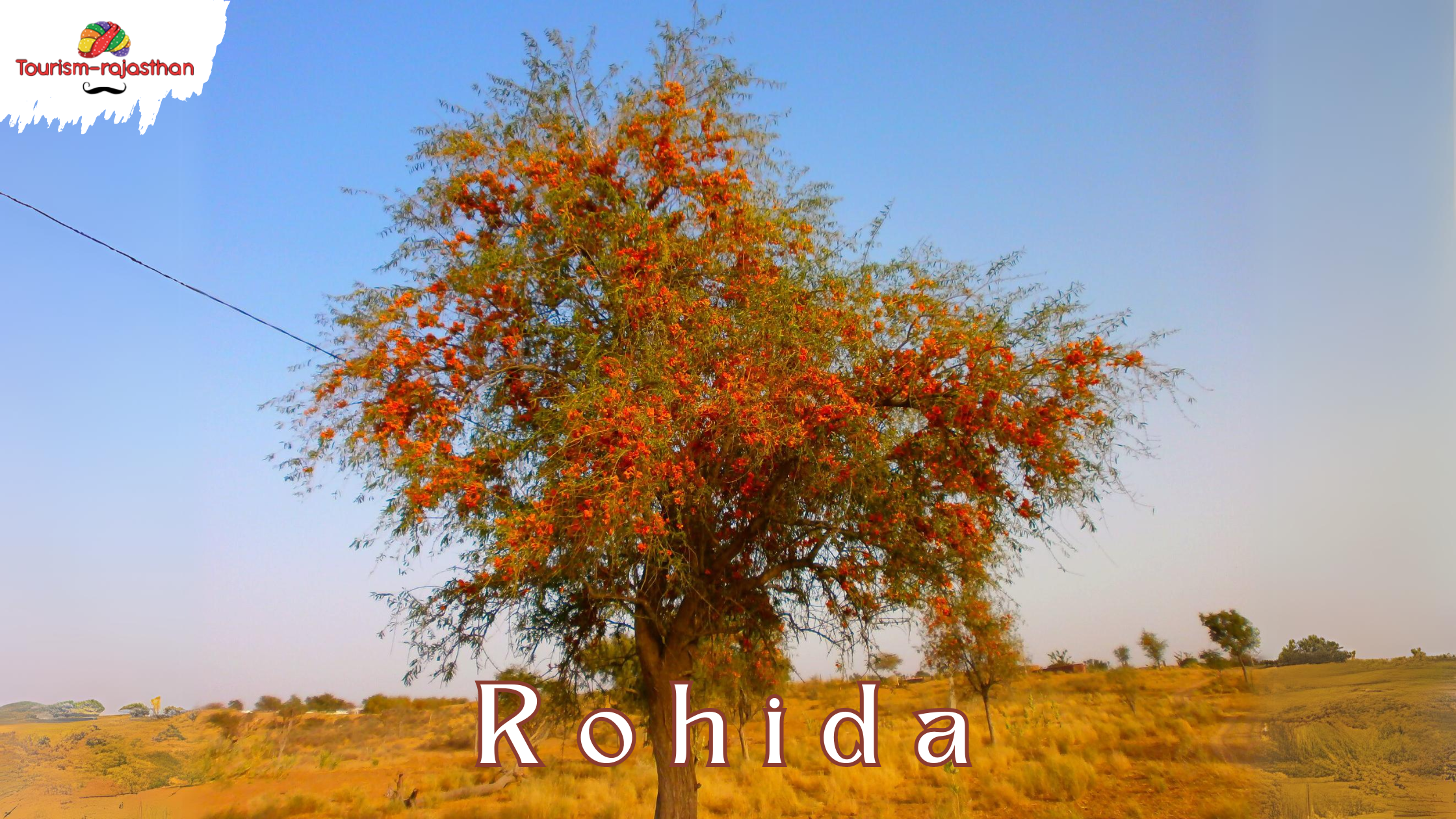

Rohida, or Desert Teak, stands tall as a resilient emblem of Rajasthan’s harsh terrain. Endemic to arid regions, its gnarled branches and distinctive trumpet-shaped flowers add a touch of vibrancy to the desert landscape. Revered for its durable wood, Rohida finds utility in construction, furniture making, and even traditional medicine. Beyond its practical value, this hardy tree plays a vital ecological role, providing habitat and nourishment to a diverse array of desert flora and fauna. With its ability to withstand extreme temperatures and water scarcity, Rohida epitomizes the resilience and adaptability synonymous with life in Rajasthan’s arid expanse.
3. Peepal (Ficus religiosa):
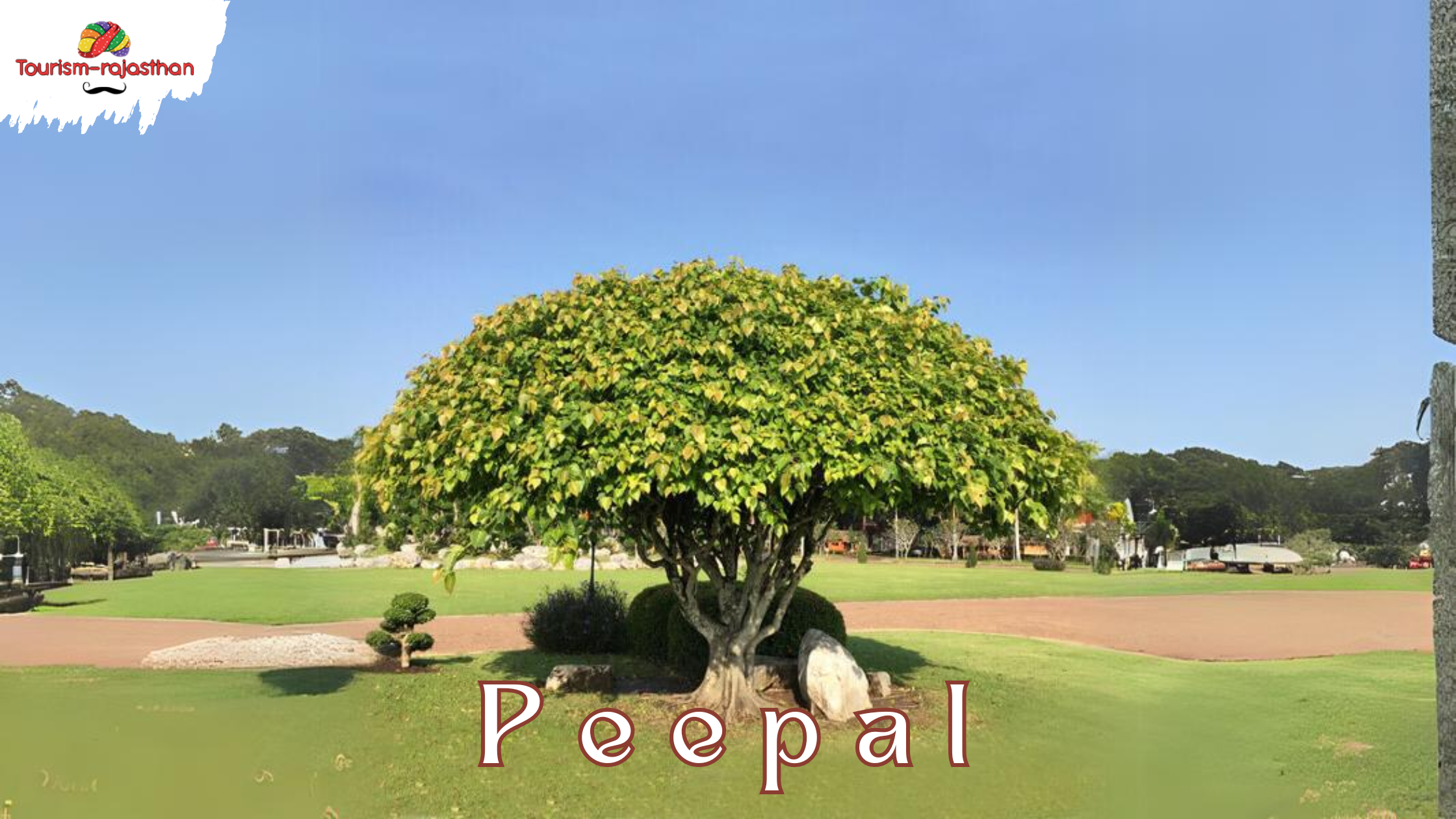

Peepal, revered as the Bodhi tree under which Lord Buddha attained enlightenment, holds a sacred place in Rajasthan’s cultural tapestry. Its heart-shaped leaves and spreading canopy offer respite from the desert sun, creating tranquil oases of shade around temples and villages. As a symbol of longevity and wisdom, Peepal trees serve as focal points for spiritual gatherings and meditative retreats. Beyond its spiritual significance, Peepal contributes to environmental conservation by purifying the air and replenishing groundwater reserves through its extensive root system. With its timeless grace and spiritual allure, the Peepal tree continues to inspire reverence and awe among Rajasthan’s inhabitants.
4. Babool (Acacia nilotica):
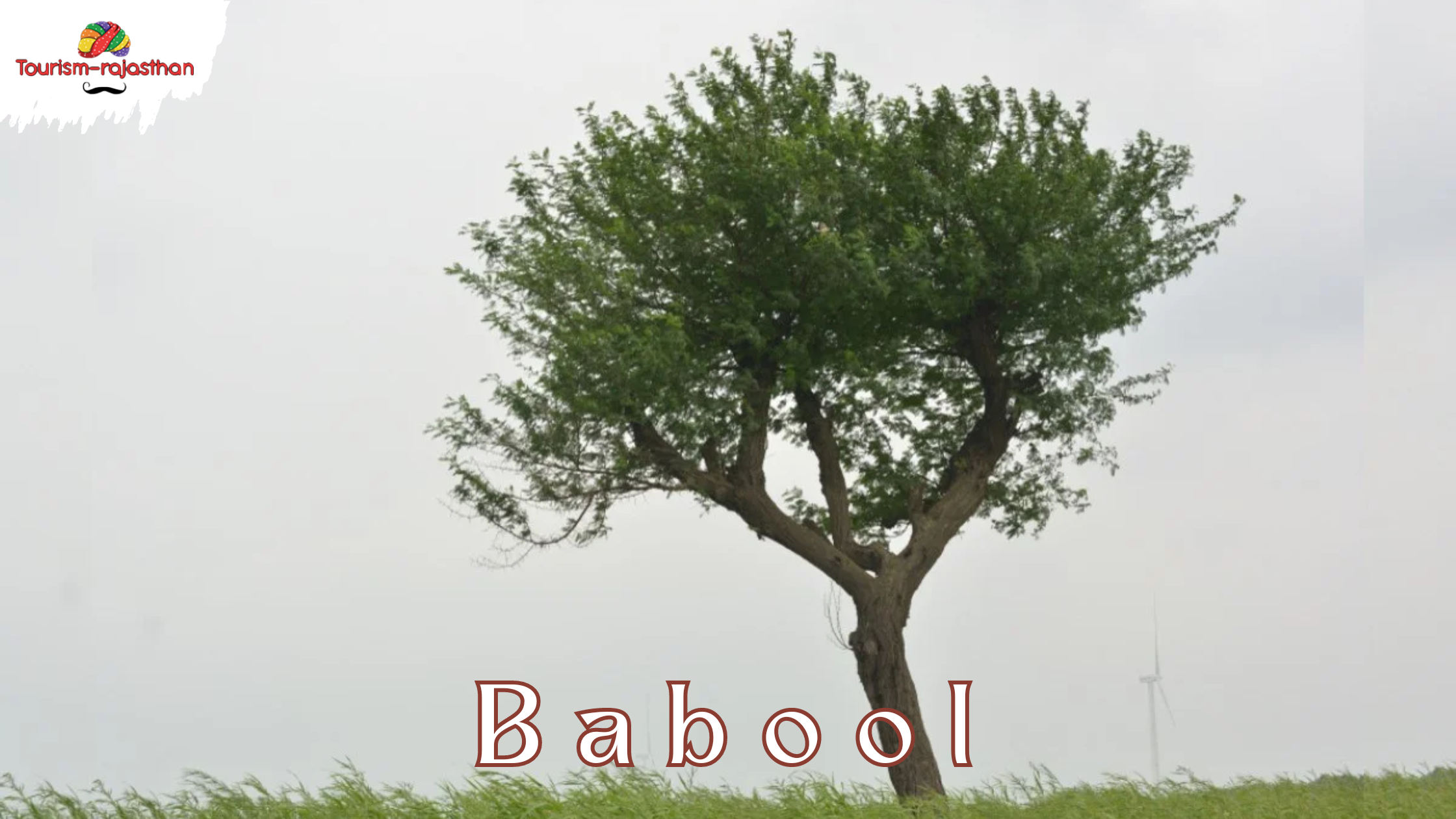

Babool, with its thorny branches and resilient demeanor, thrives in the arid landscapes of Rajasthan, embodying the spirit of endurance amidst adversity. Despite its prickly exterior, Babool offers invaluable resources to both humans and wildlife. Used for centuries in traditional medicine, its bark and gum boast medicinal properties, while its dense canopy provides shade and shelter to desert dwellers. Babool’s deep roots help stabilize soil, preventing erosion and desertification, while its pods serve as a nutritious fodder source for livestock during dry spells. With its tenacious spirit and multifaceted utility, Babool remains a cornerstone of Rajasthan’s arid ecosystem.
5. Neem (Azadirachta indica):
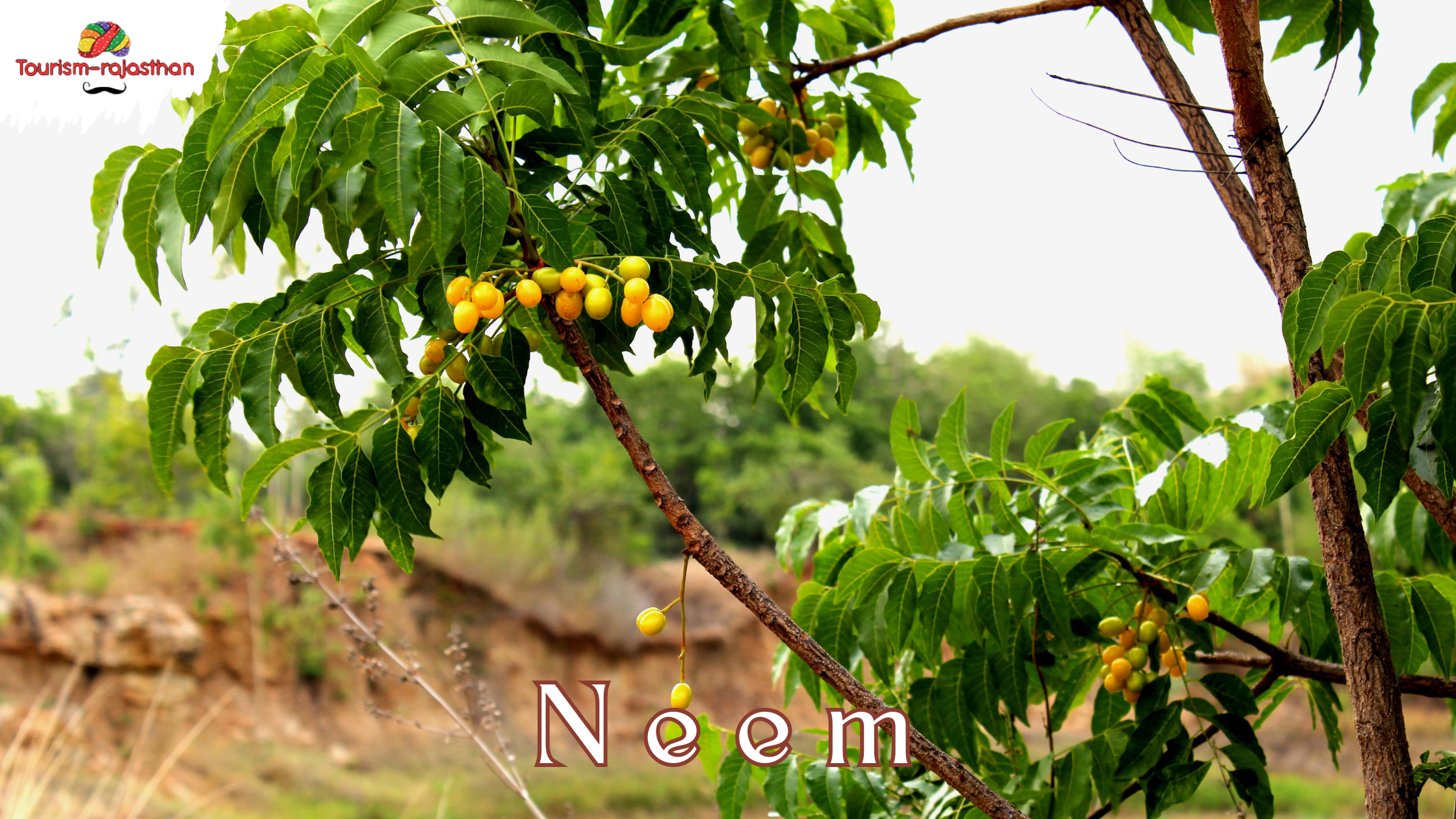

Neem, hailed as the “village pharmacy,” stands as a verdant guardian of health and vitality in Rajasthan’s arid terrain. Revered for its myriad medicinal properties, every part of the Neem tree – from its bitter leaves to its oil-rich seeds – holds therapeutic value. Widely used in Ayurvedic and traditional medicine, Neem offers remedies for ailments ranging from skin disorders to digestive issues. Beyond its medicinal prowess, Neem contributes to environmental sustainability by repelling pests, purifying water, and enriching soil fertility. With its graceful form and unparalleled utility, the Neem tree embodies the ethos of holistic wellness deeply rooted in Rajasthan’s cultural heritage.
6. Ber (Ziziphus mauritiana):
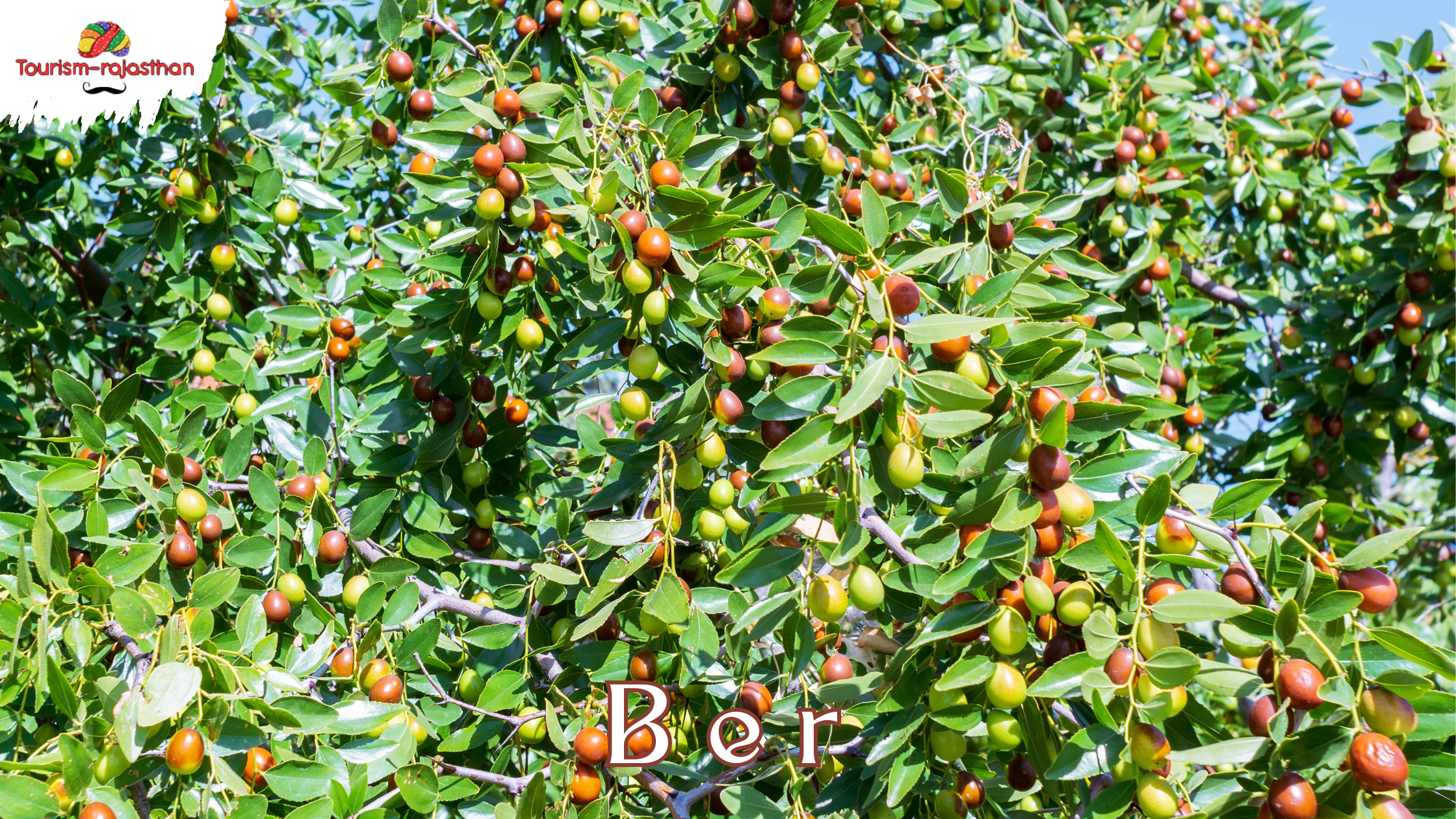

Ber, also known as the Indian jujube, thrives in Rajasthan’s arid climate, offering sustenance and sweetness amidst the desert’s harshness. With its small, round fruits and thorny branches, Ber trees dot the landscape, providing a source of nutrition for both humans and wildlife. Rich in vitamins and minerals, Ber fruits are enjoyed fresh or dried, while its leaves and bark are utilized in traditional medicine for their therapeutic properties. Beyond its culinary and medicinal uses, Ber trees play a vital ecological role, providing habitat and food for birds and small mammals. As a symbol of resilience and abundance, Ber remains deeply ingrained in Rajasthan’s cultural traditions, celebrated during festivals and auspicious occasions.
7. Bargad (Ficus benghalensis):
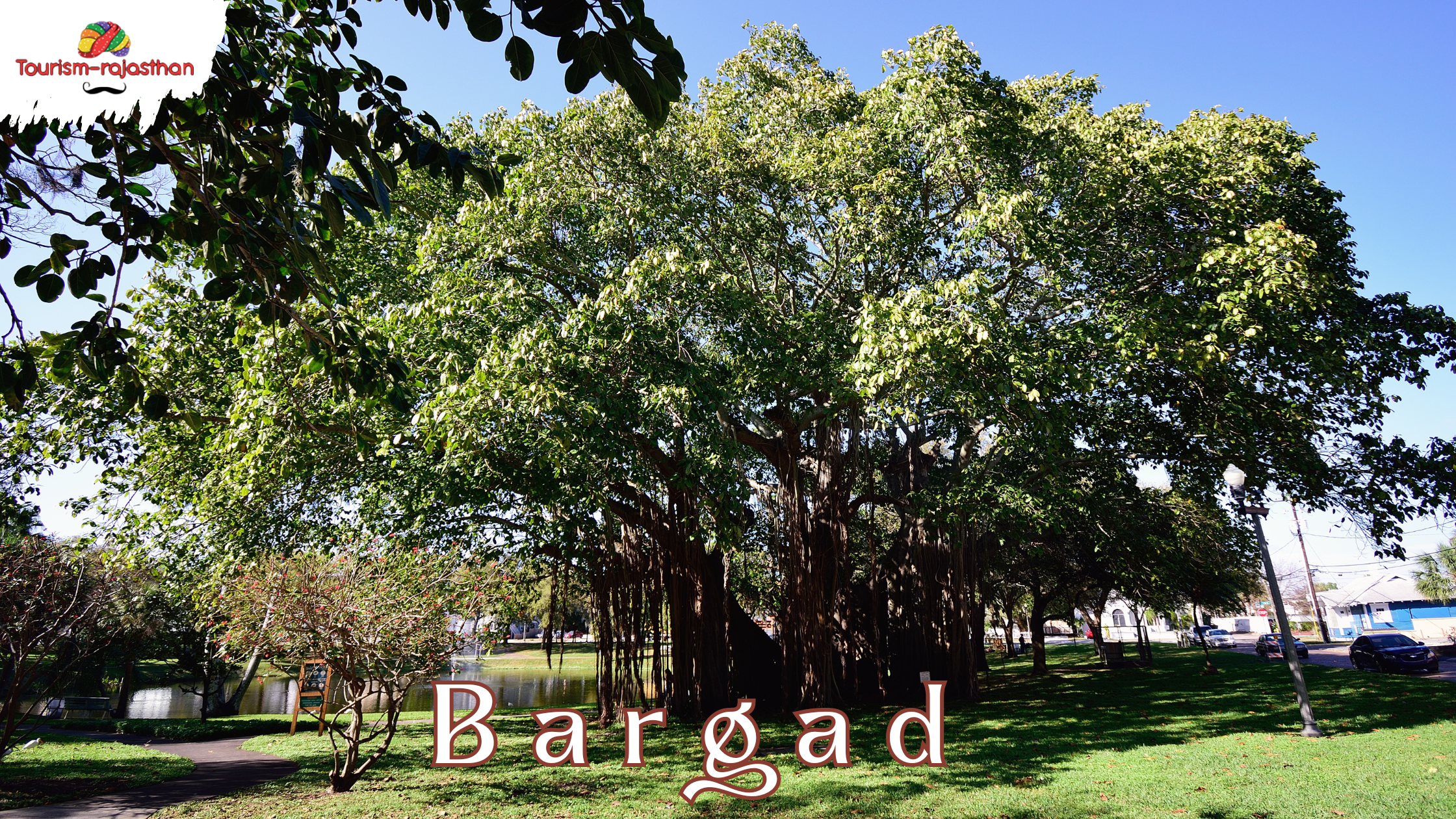

Bargad, or the Banyan tree, commands reverence with its expansive canopy and sprawling aerial roots, symbolizing wisdom and interconnectedness in Rajasthan’s cultural ethos. Often found near temples and sacred sites, Bargad serves as a spiritual anchor, inviting devotees to seek solace beneath its shade. Believed to harbor divine spirits, these ancient trees are adorned with offerings and prayers, fostering a sense of sanctity and tranquility. Beyond its spiritual significance, Bargad supports a thriving ecosystem, providing shelter and sustenance to a diverse array of flora and fauna. With its timeless presence and enduring grace, the Bargad tree stands as a living testament to Rajasthan’s rich cultural heritage.
8. Jamun (Syzygium cumini):
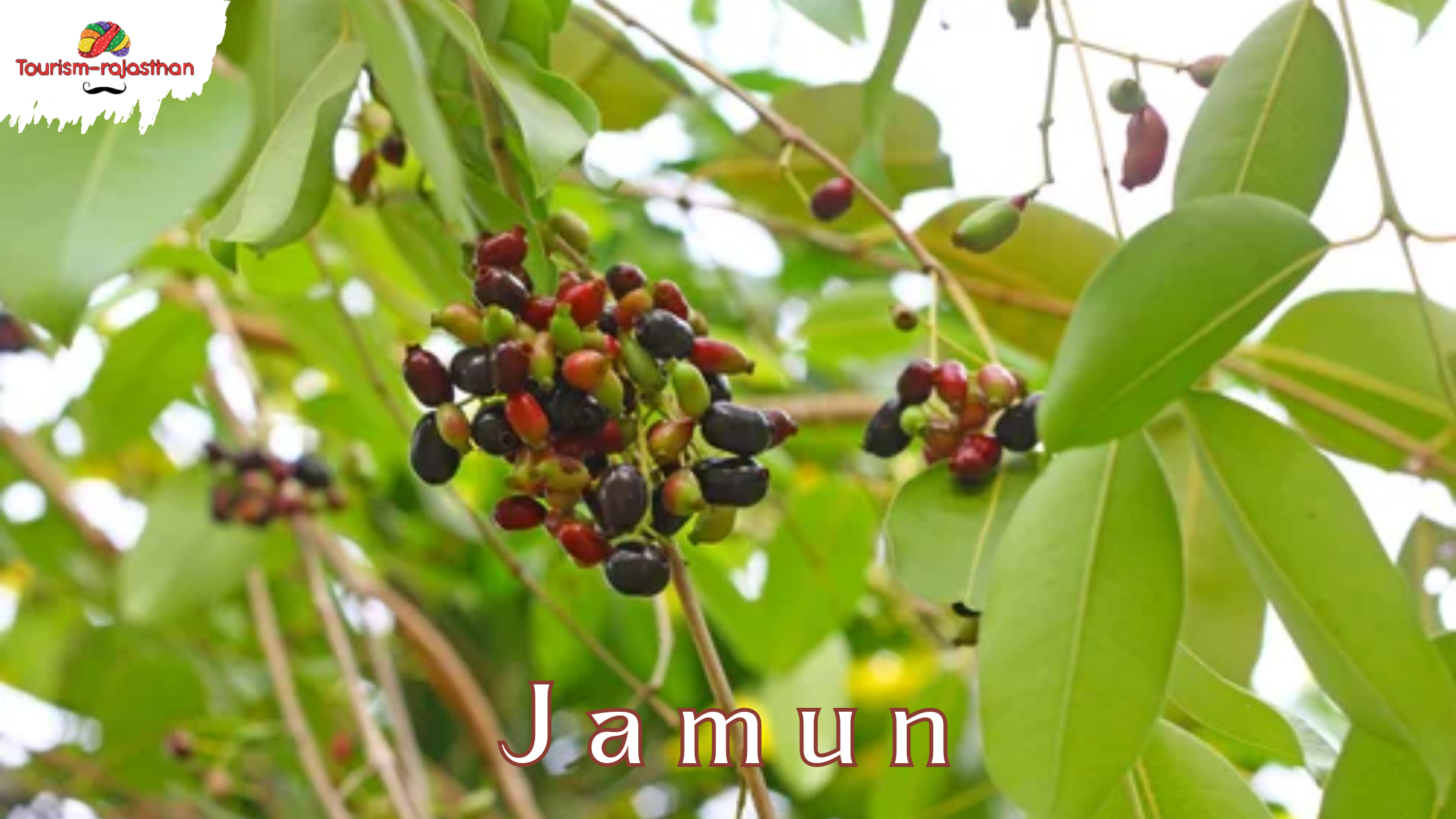

Jamun, with its luscious purple-black berries and glossy foliage, adds a splash of color and flavor to Rajasthan’s arid landscapes. Revered for its cooling properties and nutritional benefits, Jamun fruits are relished fresh or transformed into jams, juices, and preserves. Rich in antioxidants and vitamins, Jamun offers a refreshing respite during the scorching summer months, rejuvenating both body and soul. Beyond its culinary appeal, Jamun trees contribute to environmental conservation by attracting pollinators and providing habitat for birds and insects. With its bountiful harvest and sweet allure, Jamun remains a beloved symbol of abundance and vitality in Rajasthan’s cultural heritage.
9. Bans (Bamboo):
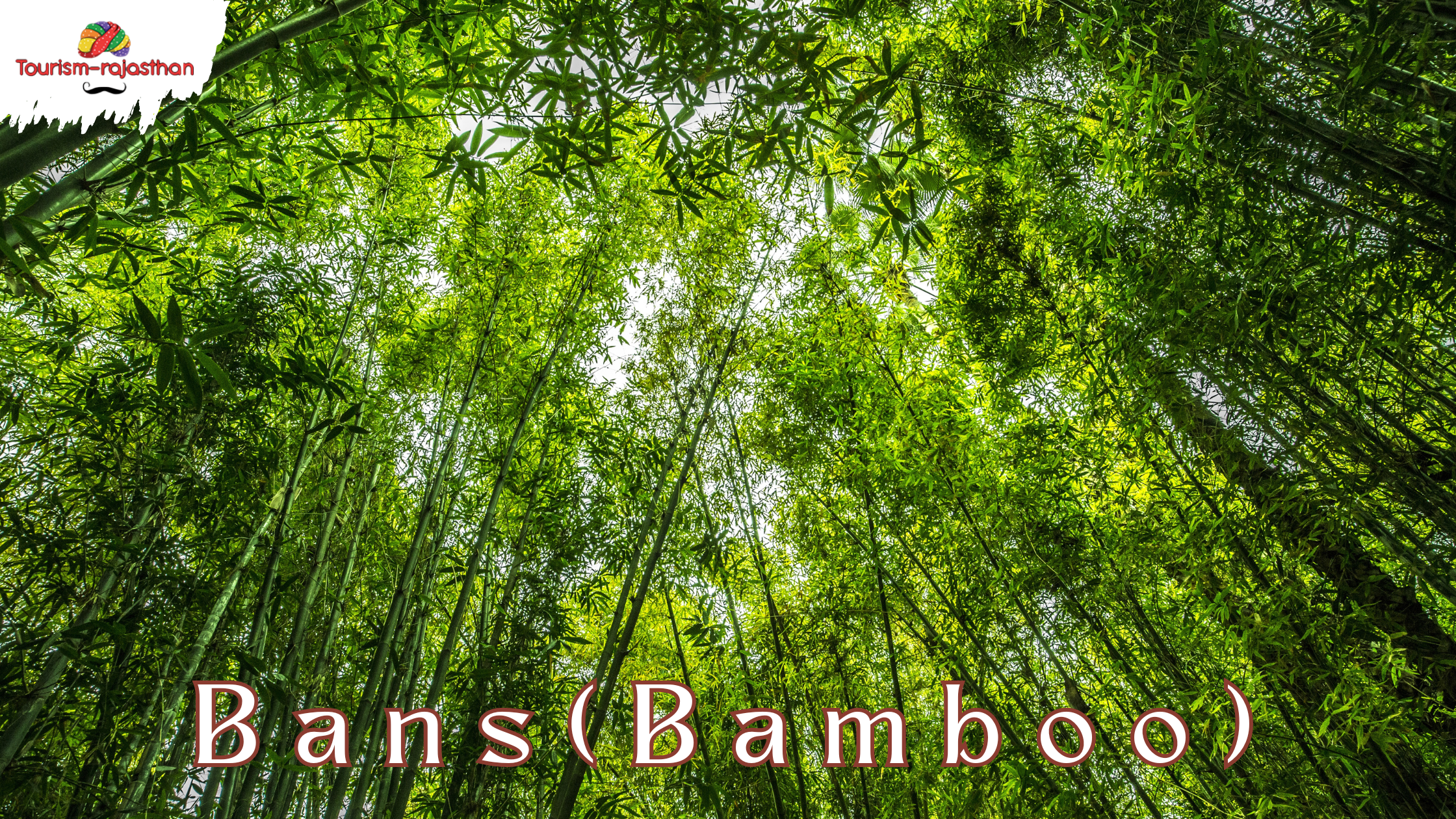

Bans, or Bamboo, stands as a versatile emblem of sustainability and resourcefulness in Rajasthan’s arid terrain. With its slender culms and resilient growth, Bamboo thrives in diverse ecosystems, offering a plethora of uses to human communities. From construction material to handicrafts, Bamboo finds utility in various aspects of daily life, reflecting Rajasthan’s ethos of resilience and ingenuity. Revered for its rapid growth and ecological benefits, Bamboo helps combat soil erosion, mitigate climate change, and restore degraded landscapes. With its graceful form and eco-friendly properties, Bamboo embodies Rajasthan’s commitment to sustainable living and environmental stewardship.
10. Dhok (Anogeissus pendula):
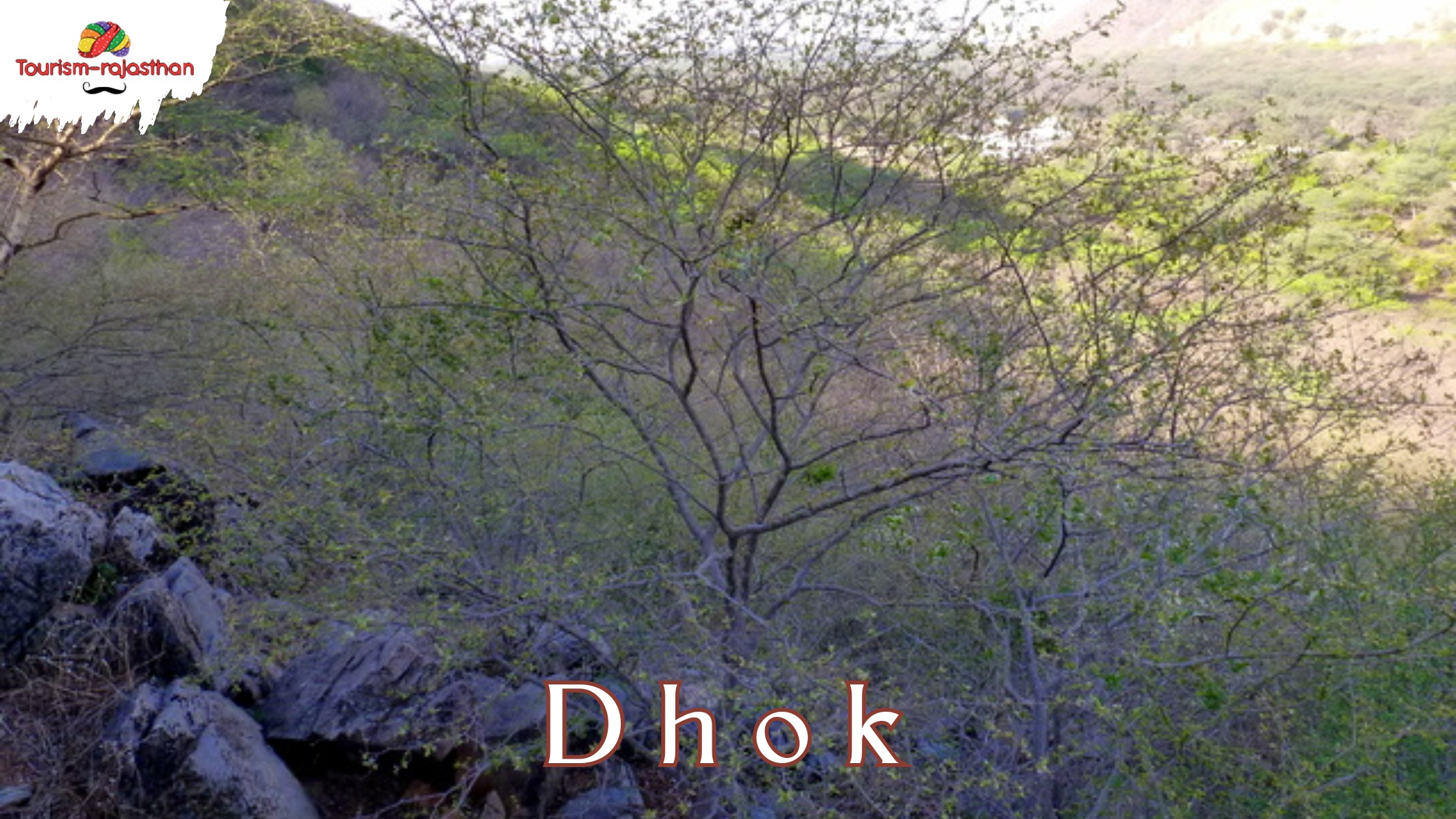

Dhok, with its gnarled branches and hardy demeanor, epitomizes the resilience and tenacity of Rajasthan’s arid landscapes. Endemic to the region, Dhok trees thrive in rocky terrain, offering shade and sustenance to both humans and wildlife. With its dense foliage and aromatic resin, Dhok provides shelter to desert fauna and acts as a windbreak, protecting fragile ecosystems from erosion and degradation. Revered for its medicinal properties, Dhok leaves and bark are utilized in traditional medicine for their anti-inflammatory and antimicrobial properties. As a symbol of endurance and vitality, Dhok remains deeply intertwined with Rajasthan’s cultural heritage, embodying the spirit of resilience amidst adversity.
11. Jaal/Pilu (Salvadora persica):
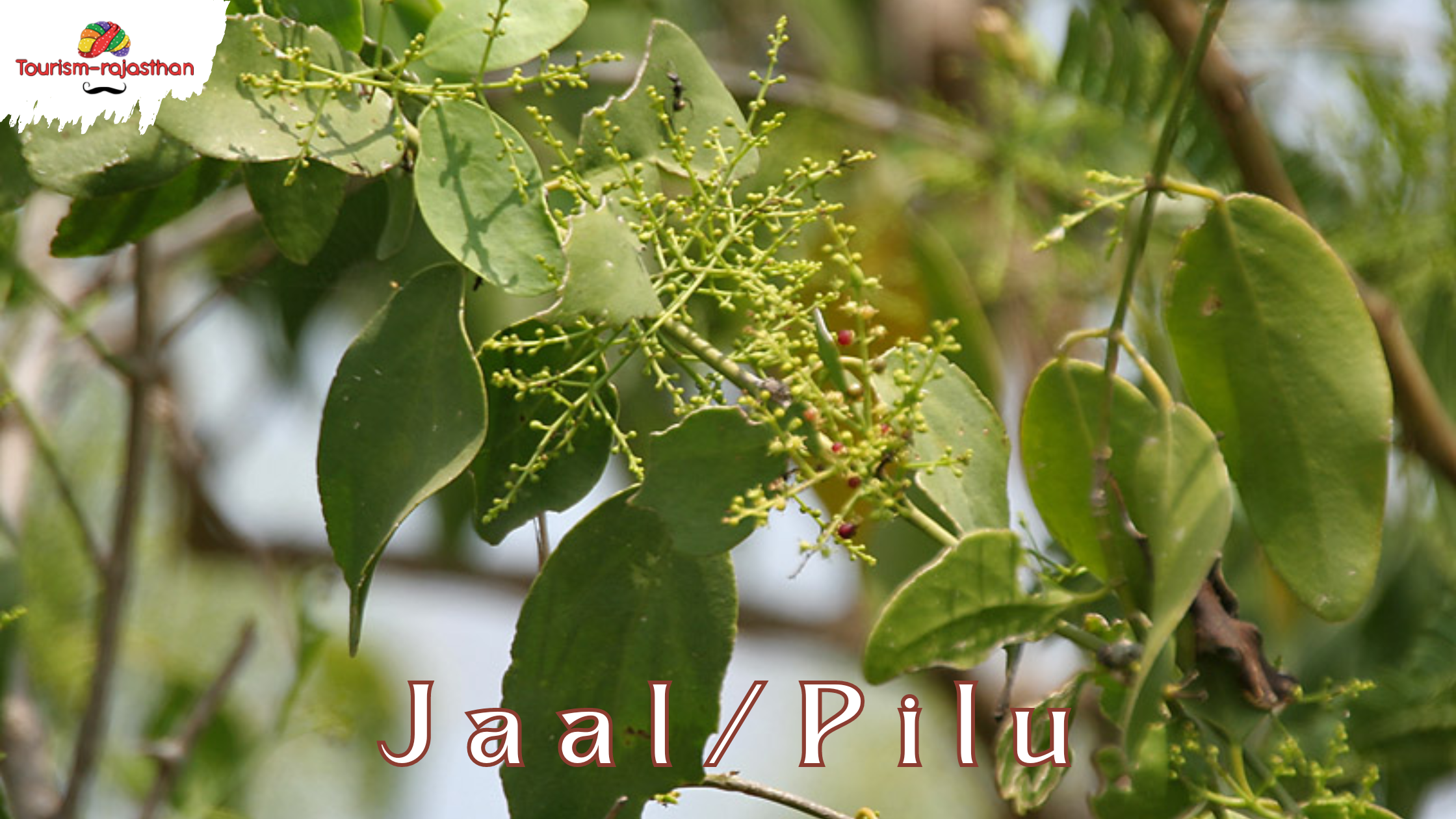

Jaal, also known as the Toothbrush tree or Pilu, holds a special place in Rajasthan’s cultural and ecological landscape. Revered for its oral hygiene benefits, Jaal twigs are traditionally used as natural toothbrushes, promoting dental health and hygiene among rural communities. Beyond its dental properties, Jaal offers a myriad of medicinal benefits, with its leaves and bark utilized in Ayurvedic and traditional medicine. Adapted to arid climates, Jaal thrives in Rajasthan’s harsh terrain, providing shade and sustenance to desert wildlife. With its multifaceted utility and ecological resilience, Jaal stands as a testament to Rajasthan’s age-old wisdom and reverence for nature.
12. Kumtha (Acacia senegal):
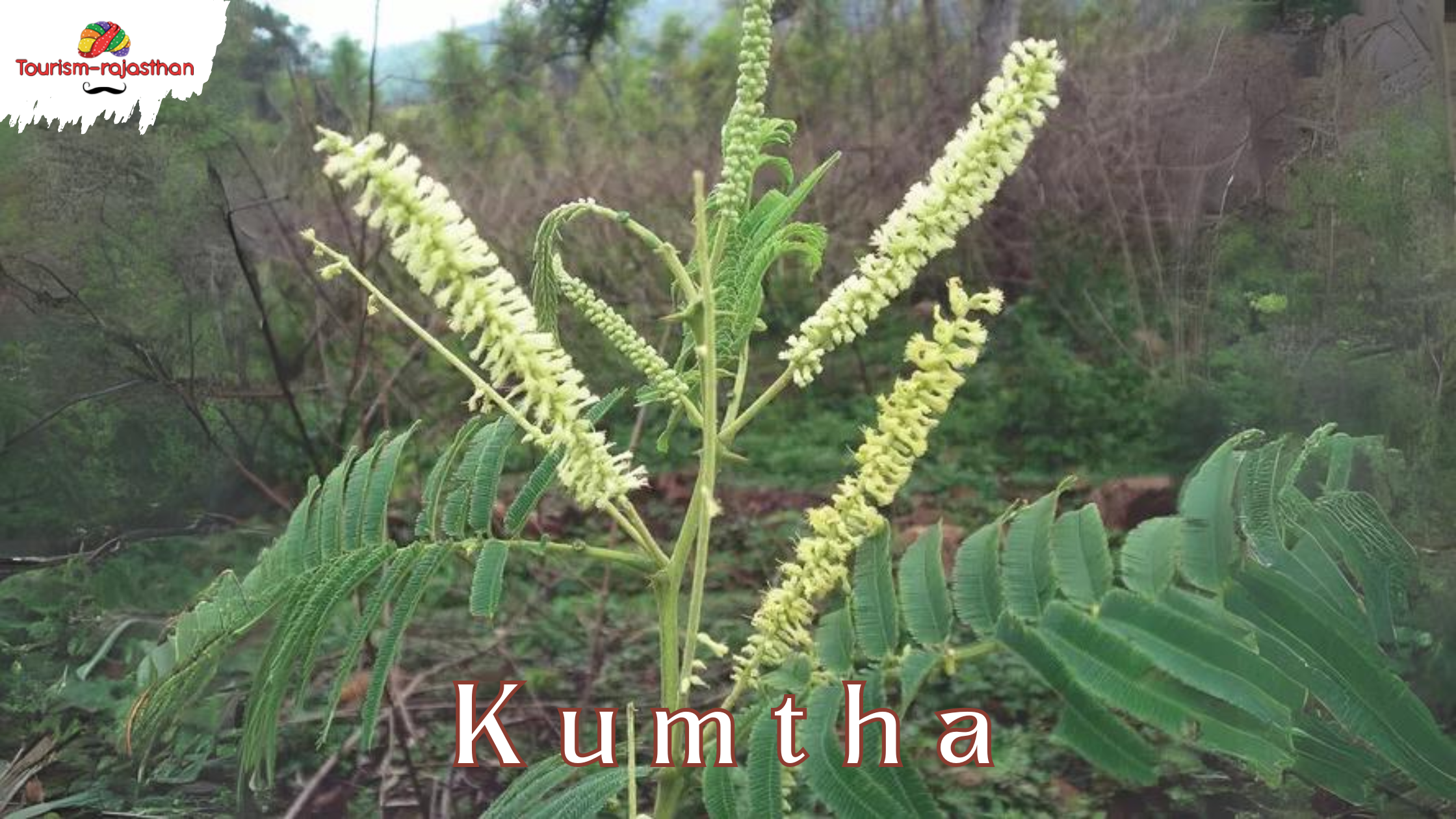

Kumtha, or Gum Arabic tree, plays a vital role in Rajasthan’s economy and ecology, with its gum resin prized for its medicinal and industrial uses. Cultivated for centuries in the arid regions of Rajasthan, Kumtha trees yield Gum Arabic, a natural exudate used in pharmaceuticals, food additives, and adhesives. Beyond its economic value, Kumtha trees contribute to soil fertility and water conservation, with their deep roots helping stabilize soil and prevent desertification. Revered for its resilience and utility, Kumtha remains an integral part of Rajasthan’s cultural heritage, embodying the region’s ethos of resourcefulness and sustainability.
13. Kair (Capparis decidua):
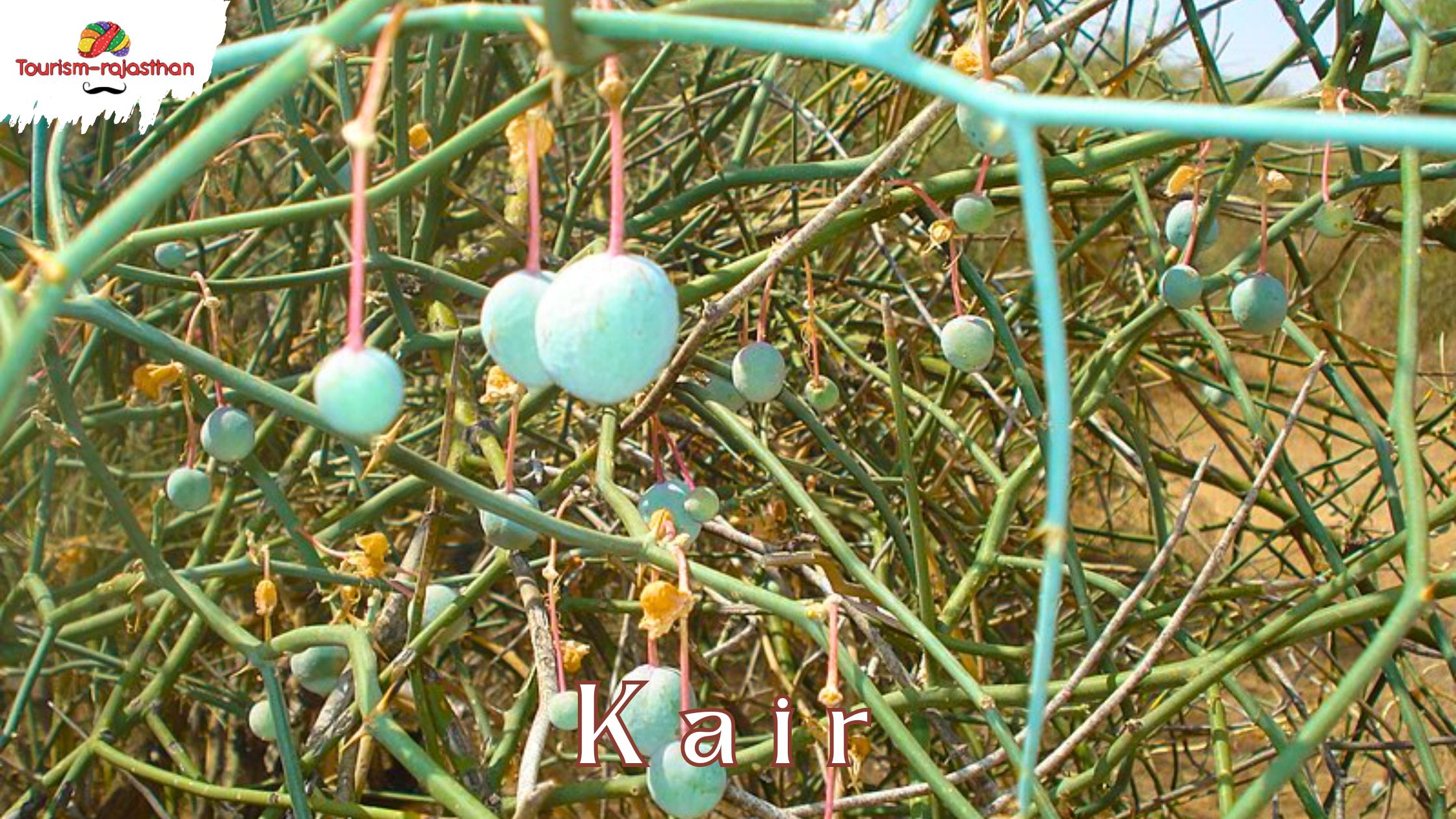

Kair, also known as the Caper bush, thrives in the arid landscapes of Rajasthan, offering sustenance and shade to desert communities. With its thorny branches and drought-resistant foliage, Kair trees adapt to extreme temperatures and water scarcity, symbolizing resilience amidst adversity. Revered for its culinary and medicinal properties, Kair fruits and tender shoots are utilized in traditional cuisine and Ayurvedic medicine. Beyond its practical uses, Kair trees play a vital ecological role, providing habitat and nourishment to desert wildlife. As a symbol of endurance and vitality, Kair remains deeply intertwined with Rajasthan’s cultural heritage, embodying the spirit of resilience in the face of adversity.
14. Phog (Calligonum polygonoides):
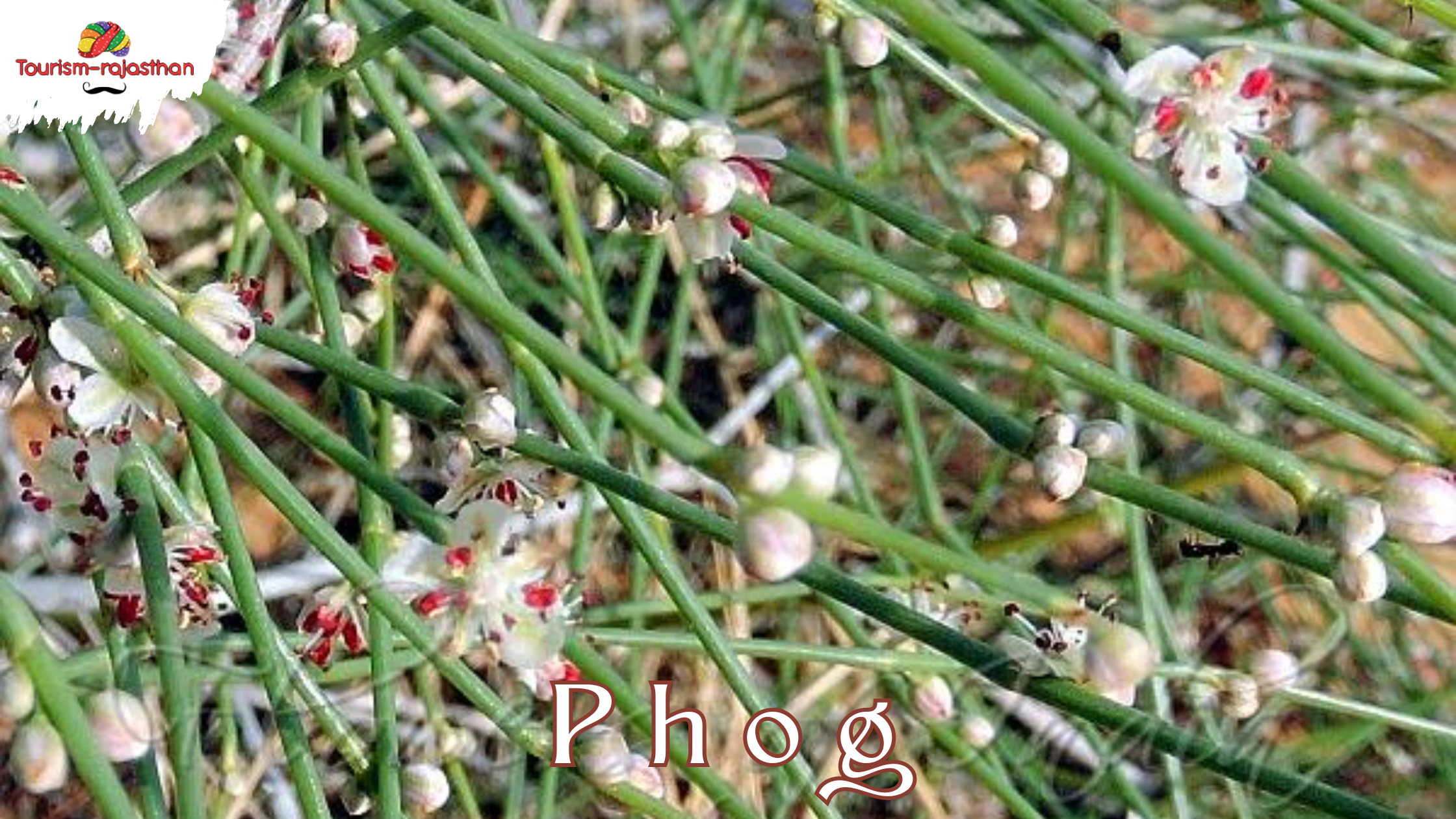

Phog, with its intricate branches and delicate pink flowers, adds a touch of beauty to Rajasthan’s arid landscapes, thriving in the region’s harsh climate. Despite its thorny exterior, Phog offers valuable resources to desert communities, with its nutritious fruits and seeds serving as a vital food source for both humans and wildlife. Revered for its medicinal properties, Phog finds application in traditional medicine for its anti-inflammatory and antioxidant effects. Beyond its practical uses, Phog trees play a crucial ecological role, stabilizing soil and preventing desertification with their extensive root systems. As a symbol of resilience and adaptation, Phog remains deeply rooted in Rajasthan’s cultural heritage, embodying the spirit of endurance amidst adversity.
Also Read: Rajasthan’s Aquatic Treasures: A Journey Through Its Lakes
Follow us on Instagram.


